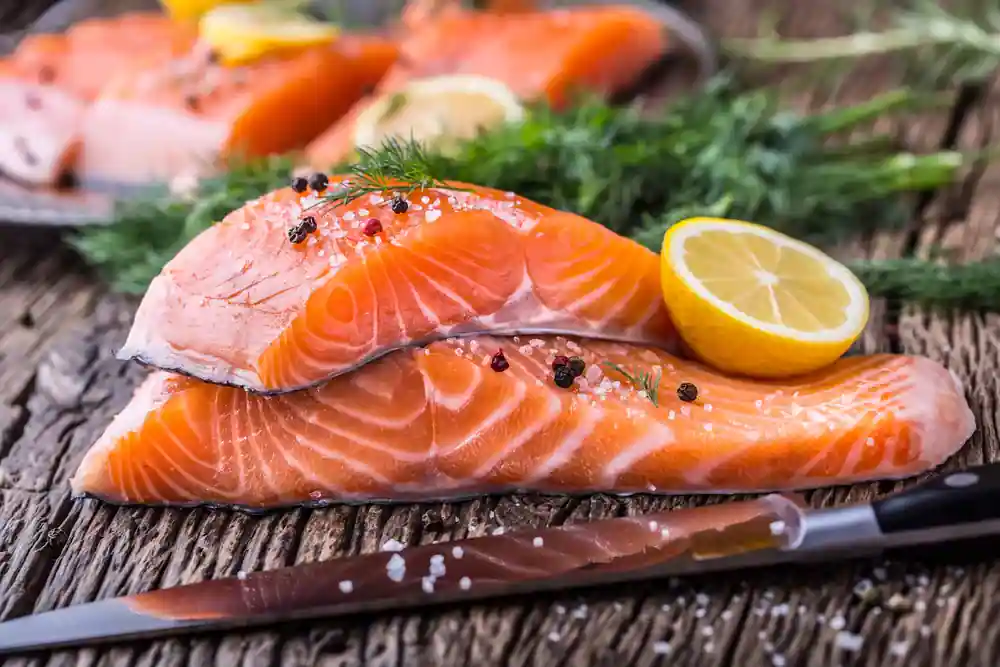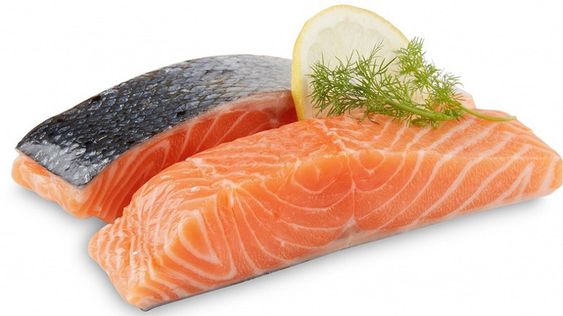Salmon, a staple in many diets worldwide, is not just a tasty fish; it’s a symbol of health and sustainability. But what about its skin? Often overlooked, salmon skin holds a treasure trove of benefits and impacts that we’re just beginning to understand. In this article, we’ll dive deep into the world of salmon skin, exploring its nutritional benefits, environmental implications, and much more.
A scrumptious bite: Salmon skin

Nutritional Profile of Salmon Skin
Like most fish, salmon skin is also rich in omega-3 fatty acids, known for their heart and brain health benefits. It’s also a good source of protein, vitamin B, and minerals. This combination makes salmon skin not just edible but highly nutritious.
The fatty acids in salmon skin can reduce inflammation and lower the risk of chronic diseases. However, it’s essential to consider the source of the salmon. Wild-caught salmon from clean waters is generally safer and more beneficial than farm-raised varieties, which may contain higher levels of contaminants.
Preparing and Cooking Salmon Skin Safely
Cooking salmon skin properly can be a flavorful and crispy addition to your meal. But while cooking, it’s crucial to use minimal cooking oil, as the skin already contains natural fats. For the best kind of salmon skin, aim for a balance of crispiness and tenderness.
Also read: Top 15 Low Calorie Foods and Snacks You Should Eat and Why
Environmental Implications of Salmon Skin Production
Salmon Farming and the Environment

Salmon farming, particularly in the Atlantic Ocean and Great Lakes areas, has various environmental impacts. Issues like overfishing, marine pollution, and habitat destruction are significant concerns. Moreover, bycatch is the inadvertent capture of non-target species during fishing operations, potentially resulting in the mortality of unintended species, including those classified as endangered or vulnerable, thereby contributing to ecological imbalances. Sustainable fishing methods and responsible fish farming practices are crucial for minimizing these impacts.
Environmental Pollution and Waste Management
Environmental pollution from salmon farming, including unhealthy levels of polychlorinated biphenyls (PCBs) and other contaminants, can affect the quality of salmon skin and improper disposal of the waste from salmon farming could lead to unhygienic surroundings. Therefore, effective waste management and pollution control are essential to ensuring the health of marine ecosystems and the safety of salmon products.
Sustainable practices to mitigate the adverse environmental impacts of the Salmon Industry
Certain strategies could be adopted to address the issues concerning the unsustainable practices of the salmon industry.
1. Preventing overfishing can be accomplished by implementing catch limits, using selective fishing gear, and avoiding destructive fishing methods.
2. Adopting optimal approaches in aquaculture, including effective waste management, minimizing chemical usage, and situating fish farms in regions with robust water currents for dilution, can contribute to the reduction of water pollution while contributing to SDG 14: Life Below Water.
3. Enforcing efficient fish waste management practices and guaranteeing the appropriate disposal of fishing gear can reduce plastic pollution.
4. Also, to cut down on emissions caused by transportation and boost local economies, choosing to procure salmon skin locally sounds like an ideal option.
5. Sustainable fishing certifications and eco-friendly farming practices are vital. Consumers can support sustainability by choosing products from companies that adhere to these practices.
Do learn: Efficient fish management protocols as per the United Nations.
Sustainable Uses of Salmon Skin
Innovation in Fashion and Design
Salmon skin is gaining popularity as an eco-friendly material in fashion. Its durability and comfort make it an excellent alternative to traditional materials. Designers like Stiven Kerestegian have pioneered the use of salmon skin by transforming it into eco-leather.

Eco-Friendly Alternative
Growing as a sustainable alternative for synthetic textiles, leather, and even biodegradable plastics, promoting the use of salmon skin can also boost indigenous communities that have long used fish skins, including salmon, in their crafts. The resurgence of salmon skin in mainstream markets can bring positive attention and support to these traditional practices.
Research on Salmon Skin and Human Health
Salmon Skin and Allergies: Some clinical studies suggest a link between salmon skin consumption and a reduced incidence of allergic disorders. However, more research is needed to fully understand this relationship.
Gut Microbiota: The omega-3 fatty acids in salmon skin may positively affect the gut microbiota, which plays a crucial role in human health. Moreover, dietary fiber in salmon skin serves as a substrate for certain beneficial bacteria in the gut, promoting their growth and activity. A balanced gut microbiome is associated with improved digestion and overall well-being.
Ongoing Studies: Research continues into the various health effects of salmon skin. Its potential benefits in areas like skin health and cognitive function are particularly promising. Studies on various components in salmon, such as omega-3 fatty acids, collagen, and bioactive compounds, have been in progress.
Consumer Awareness and Responsibility
Supporting Sustainability
Informed consumer choices can significantly impact the sustainability of the salmon industry. Choosing wild-caught fish and products with sustainable certifications can make a difference. Hence, looking for labels indicating sustainable fishing practices and ethical sourcing when buying salmon products helps ensure that you’re making environmentally responsible choices and contributing to SDG 12: Responsible consumption and production.
Advocacy for Marine Ecosystems
A distinct set of protocols could be proposed concerning sustainable uses of salmon skin; encompassing the same, consumers can also advocate for policies and practices that protect marine ecosystems and promote sustainable fishing.
Salmon skin, often discarded or overlooked, is a powerhouse of nutrition and a symbol of sustainable consumption. By understanding its benefits and impacts, we can make more informed choices that support our health and the environment. Let’s embrace the sustainable bite of salmon skin and contribute to a healthier planet.








